
Table of Contents
ToggleClass 8, Maths, Chapter 15, Exercise 15.1 Solutions
Q.1. The following graph shows the temperature of a patient in a hospital, recorded every hour.
(a) What was the patient’s temperature at 1 p.m.?
(b) When was the patient’s temperature 38.5° C?

(c) The patient’s temperature was the same two times during the period given.
What were these two times?
(d) What was the temperature at 1.30 p.m.? How did you arrive at your answer?
(e) During which periods did the patients’ temperature showed an upward trend?
Ans:
(a) The patient’s temperature at 1 pm was 36.5°C
(b) The patient’s temperature was 38.5°C at 12:00 noon.
(c) The patient’s temperature was 36.5°C at 1 pm and 2 pm.
(d) The temperature at 1:30 pm was 36.5°C. For 1:30 pm, we have taken mid value of 1 pm and 2pm and drawn a perpendicular line to meet the horizontal line coming from 36.50C.
(e) During 9 am to 10 am , 10 am to 11 am and 2 to 3 pm the temperature showed upwards trend.
Q.2. The following line graph shows the yearly sales figures for a manufacturing company.
(a) What were the sales in (i) 2002 (ii) 2006?
(b) What were the sales in (i) 2003 (ii) 2005?
(c) Compute the difference between the sales in 2002 and 2006.
(d) In which year was there the greatest difference between the sales as compared to its previous year?
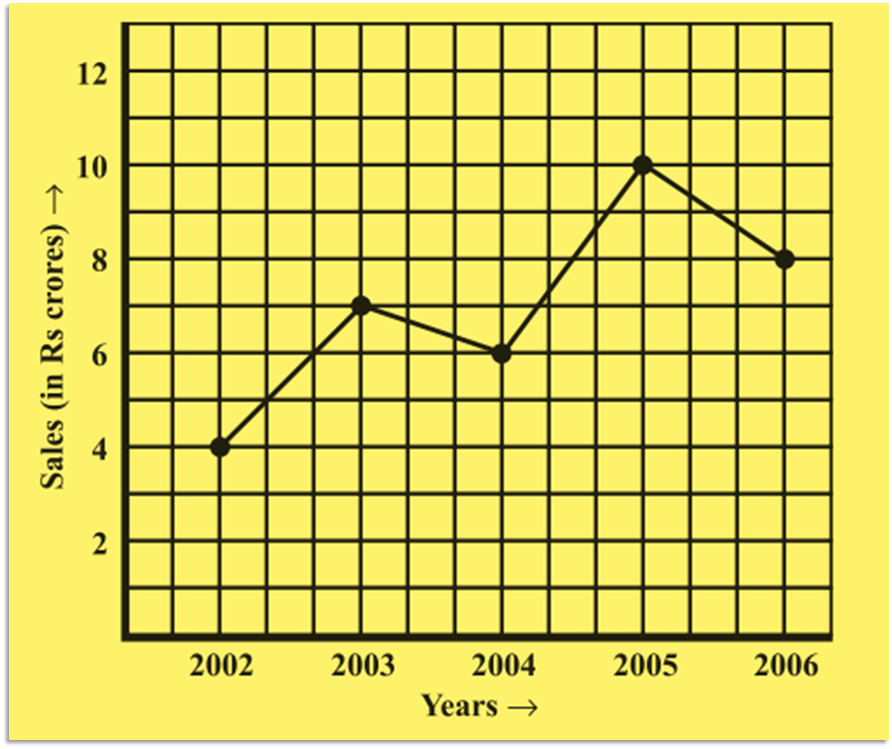
Ans:
(a) The sales
(i) in the year 2002 was ₹ 4 crore
(ii) in the year 2006 was ₹ 8 crore.
(b) The sales
(i) in the year 2003 was ₹ 7 crore
(ii) in 2005 was ₹ 10 crore.
(c) The difference between the sales in 2002 and 2006:
(i) Difference = Sales in 2006 – Sales in 2002
(ii) Difference = ₹ (8 – 4) = ₹ 4 crores
(d) The greatest difference between the sales was in the year 2005, as compared to previous year which is (₹10 crores – ₹ 6 crores) = ₹ 4 crores.
Q.3. For an experiment in Botany, two different plants, plant A and plant B were grown under similar laboratory conditions. Their heights were measured at the end of each week for 3 weeks. The results are shown by the following graph.
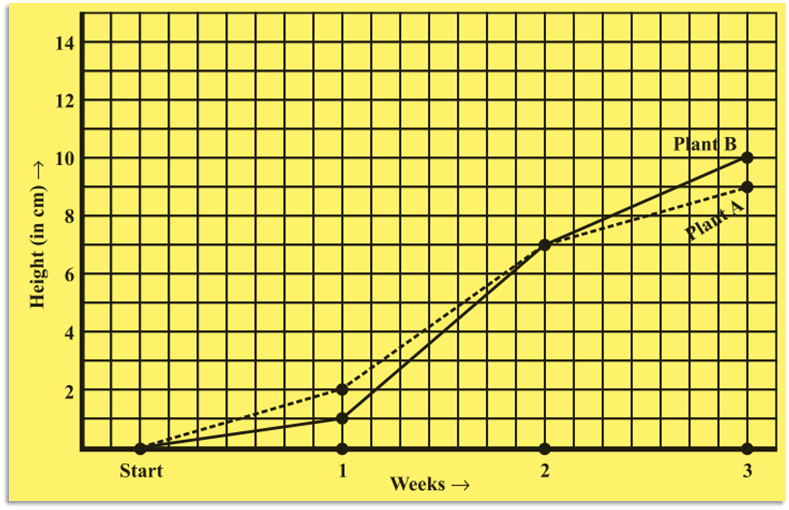
(a) How high was Plant A after (i) 2 weeks (ii) 3 weeks?
(b) How high was Plant B after (i) 2 weeks (ii) 3 weeks?
(c) How much did Plant A grow during the 3rd week?
(d) How much did Plant B grow from the end of the 2nd week to the end of the 3rd week?
(e) During which week did Plant A grow most?
(f) During which week did Plant B grow least?
(g) Were the two plants of the same height during any week shown here? Specify.
Ans:
(a) The height of plant A
(i) after 2 weeks was 7 cm
(ii) after 3 weeks was 9 cm.
(b) The height of plant B
(i) after 2 weeks was 7 cm
(ii) after 3 weeks was 10 cm.
(c) Plant A grew 2 cm during the third week (9 cm –7 cm = 2 cm).
(d) Plant B grew 3 cm from the end of the 2nd week to the end of the 3rd (10 cm -7 cm = 3 cm).
(e) Plant A grew most in a 2nd week i.e., 5 cm.
(f) Plant B grew the least in a 1st week i.e., 1 cm.
(g) Yes, at the end of second week, the two plants grew the same height. i.e., 7 cm.
Q.4. The following graph shows the temperature forecast and the actual temperature for each day of a week.
(a) On which days was the forecast temperature the same as the actual temperature?
(b) What was the maximum forecast temperature during the week?
(c) What was the minimum actual temperature during the week?
(d) On which day did the actual temperature differ the most from the forecast Temperature ?
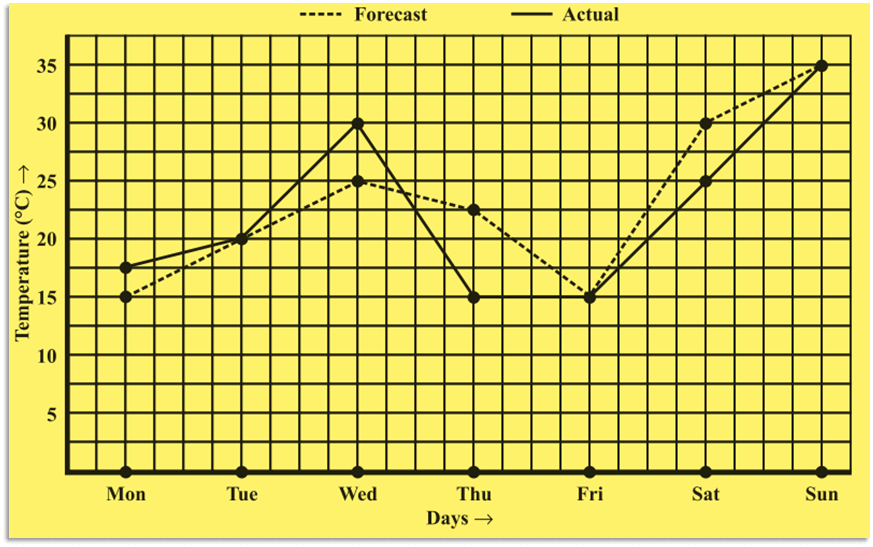
Ans:
(a) On Tuesday, Friday and Sunday, the forecast temperature was the same as the actual temperature.
(b) The maximum forecast temperature during the week was 35°C.
(c) The minimum actual temperature during the week was 15°C
(d) On Thursday, the actual temperature differed the most from the forecast temperature.
Q.5. Use the tables below to draw linear graphs.
(a) The number of days a hill side city received snow in different years.

(b) Population (in thousands) of men and women in a village in different years.

Ans:
(a) The number of days a hill side city received snow in different years.


(b) Population (in thousands) of men and women in a village in different years.


Q.6. A courier-person cycles from a town to a neighbouring suburban area to deliver a parcel to a merchant. His distance from the town at different times is shown by the following graph.
(a) What is the scale taken for the time axis?
(b) How much time did the person take for the travel?
(c) How far is the place of the merchant from the town?
(d) Did the person stop on his way? Explain.
(e) During which period did he ride fastest?
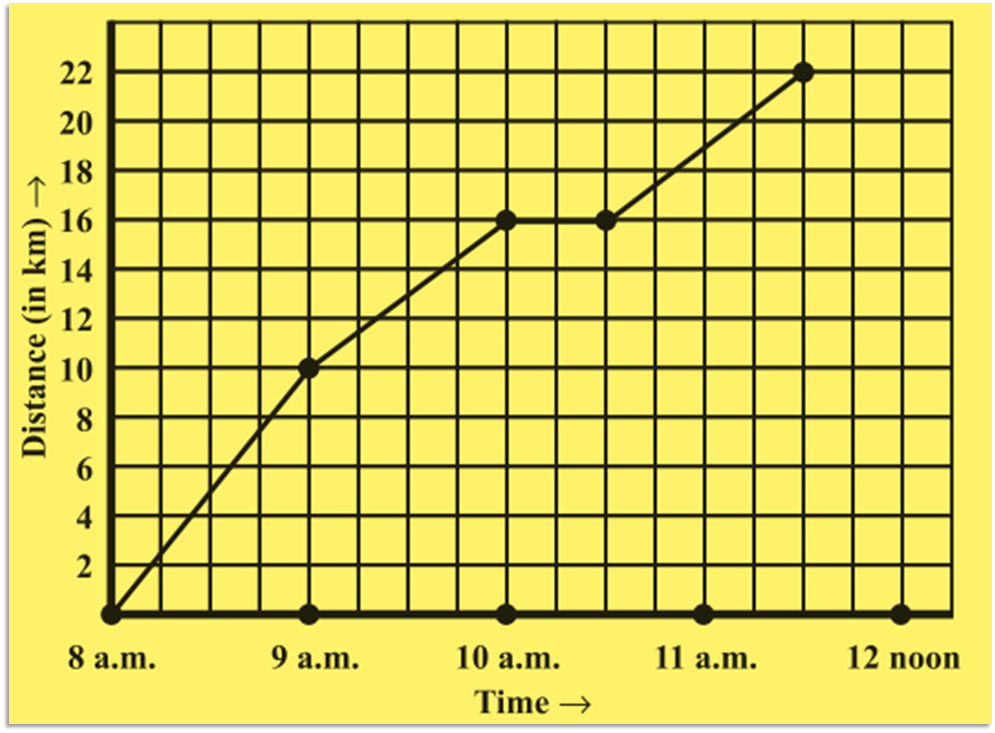
Ans:
(a) Scale taken on time-axis i.e., Time (x-) axis = 4 cm (units) = 1 hour
(b) The time taken by the person for total journey is 3 hr 30 min (8 am to 11:30 am)
(c) It was 22 km far from the town.
(d) Yes, the person stops on his way. This is indicated by the horizontal part of the graph. He stayed from 10 am to 10.30 am.
(e) The person rode fastest between 8 am and 9 am at the speed of 10 km/hr.
Q.7. Can there be a time-temperature graph as follows? Justify your answer.
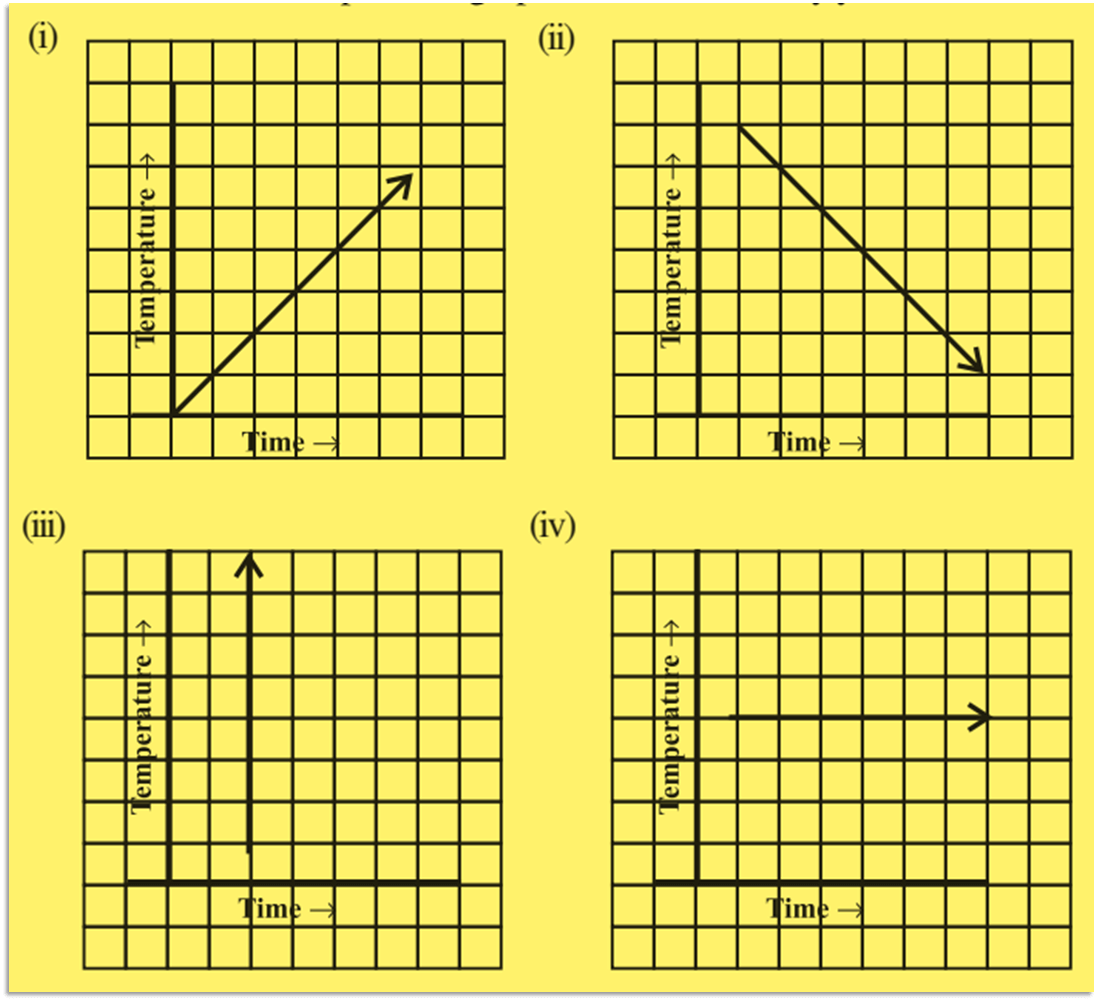
Ans:
(i) It is a time-temperature graph when the time increases, temperature also increases.
(ii) It is a time-temperature graph when the time increases, temperature decreases.
(iii) It is not a time-temperature graph. Here, time is same but temperature is increasing. Which is not possible.
(iv) It is not a time-temperature graph. here , time is increasing but temperature is same. Which can be possible.

